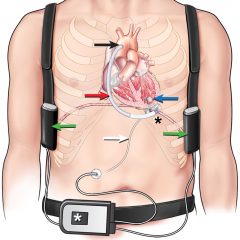September 2024
Recommendations for Multimodality Imaging of Patients With Left Ventricular Assist Devices and Temporary Mechanical Support: Updated Recommendations from the American Society of Echocardiography
Recommendations for Multimodality Imaging of Patients With Left Ventricular Assist Devices and Temporary Mechanical Support: Updated Recommendations from the American Society of Echocardiography

Advances over the past several years in temporary and durable left ventricular (LV) assist devices (LVADs) support the need for an updated perspective on the role of noninvasive imaging in contemporary mechanical circulatory support (MCS) management. These advances include the evolution and increased utilization of temporary MCS (TMCS) devices, adoption of the fully magnetically levitated durable HeartMate 3 (HM3; Abbott), and an increased availability and use of complementary multimodality imaging techniques, such as computed tomography (CT) and positron emission tomography (PET), to evaluate and manage complications associated with LVADs. This guideline will serve as an update to the 2015 comprehensive American Society of Echocardiography (ASE) LVAD guideline (hereinafter referred to as the ‘‘2015 Guideline’’) document that predominantly focused on long-term, surgically implanted continuous-flow LVADs. The 2015 Guideline describes the preprocedural aspects of imaging and remains in effect. This document, like the 2015 Guideline, uses both published data and expert opinion from high-volume MCS implantation centers to provide consensus recommendations. In addition, our writing group includes experts from multiple disciplines including sonography, cardiology, cardiothoracic anesthesiology, cardiothoracic surgery, advanced heart failure (HF) and heart transplantation (HT), critical care, emergency medicine, interventional cardiology, and radiology. We have elected to carry over select key points from the previous document to provide a comprehensive summary for the use of echocardiography in the management of LVAD patients. Furthermore, we acknowledge the growing role of point-of-care ultrasound (POCUS), which may be useful in evaluating patients with MCS in selected clinical situations.
Chair(s)
- Estep, Jerry D.
- Nicoara, Alina
